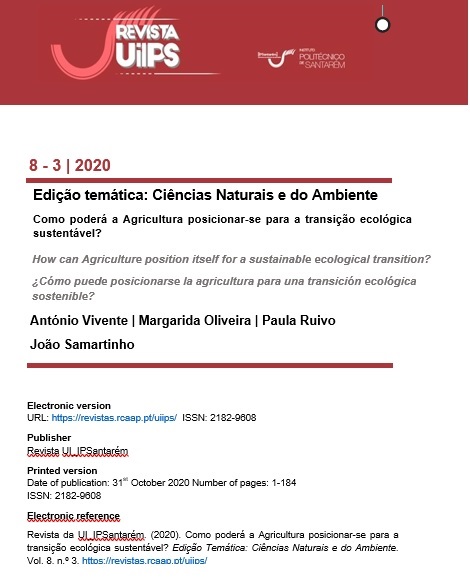Bamboo as an alternative to conventional wastewater treatment systems
DOI:
https://doi.org/10.25746/ruiips.v8.i3.21341Keywords:
Bamboo, COD, constructed wetlands, treatment efficiency, urban wastewaterAbstract
Bamboo is a fast-growing plant, with several uses in the daily lives of countries in the southern hemisphere, from urban buildings to everyday utensils, allowing its valorisation. However, its use in constructed wethlands to treat urban wastewater is still poorly studied. The main objective of the study was to design a low-cost wastewater treatment system, on a pilot scale. For this purpose, 5 beds with 1m2 were built, placed in a greenhouse under controlled temperature and humidity conditions, using two species of plants: Bambusa tuldoides and Phragmites australis. The beds were fed with synthetic wastewater, 0.32m3 / day, using a discharge system to control the liquid sheet in the bed. The treatment efficiency was evaluated based on the parameters referred to in the current legislation, revealing the positive performance of Bambusa tuldoides in the treatment of nitrogen and phosphorus.
Downloads
Published
How to Cite
Issue
Section
License
Authors publishing in this journal agree to the following terms:
Authors retain copyright and grant the journal the right of first publication, with the article simultaneously licensed under the Creative Commons Attribution License that allows sharing of the work with acknowledgement of authorship and initial publication in this journal.
Authors are permitted to enter into additional contracts separately for non-exclusive distribution of the version of the article published in this journal (e.g., publish in an institutional repository or as a book chapter), with acknowledgment of authorship and initial publication in this journal.
Authors have permission and are encouraged to publish and distribute their work online (e.g., in institutional repositories or on their personal webpage) at any point before or during the editorial process, as this may generate productive changes, as well as increase the impact and citation of the published work.



